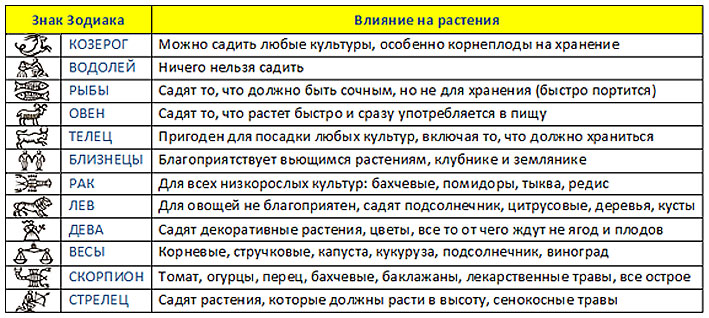The most powerful earthquakes. The strongest earthquakes in the world
This terrible event, now known as the most powerful earthquake in history, not at all in Japan or China, where such natural disasters so often occur today, but in India.


It happened the most powerful earthquake in history in 1950 in Assam, an Indian state in the east of the country. The strength of the earth tremors that started then was so high that special devices failed to fix them, because all sensors just went through the roof. After the earthquake ended, causing huge losses to the city and leaving behind terrible ruins throughout the area, this disaster was officially assigned a strength of nine on the Richter scale. However, everyone who witnessed this event knows that in reality the shocks were much stronger.



Interesting that the waves from this the most powerful earthquake in the world even reached America. On that day, August 15, very strong, one might say, abnormal earth tremors were recorded in the USA. Researchers decided that a natural disaster occurred in Japan, however, at the same time a similar story occurred in this country. The latter suggested that the earthquake occurred in America, but not closer. In the end, it turned out that such a destructive shaking occurred in India. Terrible is not only the strength of this disaster, but also its duration. The shocks continued continuously for five days, i.e. almost a week. As a result, more than two thousand people lost their homes, and more than a thousand died. All new faults of the earth's crust appeared every day, and thick and hot steam poured from the cracks. The catastrophe had a very large-scale effect: dams, dams and other facilities were destroyed.


As a result, this strongest earthquake in history caused damage of $ 25 million. Newspapers described these events after this: many residents of cities and towns tried to escape in the trees, one woman even had to give birth to a child in this condition - high above the ground. By itself, this region has long been known for the very unstable position of the earth's crust; these places are subject to both earthquakes and floods, which occur constantly as a result of seasonal monsoons. Two more cataclysms were recorded earlier - in 1869 and 1897 (more than eight points on the Richter scale).
The danger of such a natural phenomenon as an earthquake is estimated by most seismologists in points. There are several scales by which the strength of seismic shocks is estimated. The scale adopted in Russia, Europe and the CIS countries was developed in 1964. According to the data from the 12-point scale, the greatest destructive force is characteristic of an earthquake of 12 points, and such strong shocks as “severe disaster” qualify. There are also other methods of measuring the strength of the shocks that take into account fundamentally different moments - the area on which the shocks occurred, the time of “shaking” and other factors. However, no matter how you measure the strength of tremors, there are natural disasters that are among the most terrible.
The strength of earthquakes: was there at least 12 points?
Since the Kamori scale was accepted for consideration, and this made it possible to evaluate natural disasters that have not yet been hidden in the dust of centuries, at least 3 earthquakes with a magnitude of 12 points have occurred.
- The tragedy in Chile, 1960.
- Destruction in Mongolia, 1957.
- Shocks in the Himalayas, 1950.
In the first place of the rating, which collects the most powerful earthquakes in the world, the cataclysm of 1960, known as the "Great Chilean earthquake." The extent of destruction is estimated at the maximum known 12 points, while the magnitude of the oscillations of the earth exceeded 9.5 points. The most powerful earthquake in history occurred in May 1960 in Chile, near several cities. Valdivia became the epicenter, where fluctuations reached a maximum, but the population was notified of the danger, since the shocks were felt the day before in the nearby provinces of Chile. 10 thousand people are considered dead in this terrible disaster, a mass of people were carried away by the tsunami that began, but experts say that without prior warning, the victims could be many times more. By the way, many people were saved due to the fact that a lot of people went to church for Sunday services. At the time of the start of the shaking, people were in temples that stood.

The Gobi-Altai disaster, which swept through Mongolia on December 4, 1957, is among the most destructive earthquakes in the world. As a result of the tragedy, the earth was literally turned inside out: kinks were formed demonstrating such geological processes that are not visible under ordinary circumstances. High mountains in mountain ranges ceased to exist, peaks collapsed, the familiar pattern of mountains was disrupted.

The shocks in the populated areas went on increasing and continued for a rather long time, until they reached 11-12 points. People managed to leave their homes seconds before complete destruction. Dust flying from the mountains covered the cities of southern Mongolia for 48 hours, visibility did not exceed several tens of meters.
Another terrible cataclysm, estimated by seismologists at 11-12 points, happened in the Himalayas, in the highlands of Tibet, in 1950. The terrible earthquake in the form of mudflows and landslides changed the relief of the mountains beyond recognition. With a terrible roar, the mountains formed like paper, and dust clouds spread from the epicenter to a radius of up to 2000 km.

Shocks from the depths of centuries: what do we know about antiquity earthquakes?
The largest earthquakes that have occurred in recent times are discussed and well covered in the media.
Thus, they are still heard, the memory of them, of victims and destruction is still fresh. But what about earthquakes that happened a long time ago - a hundred, two hundred or three hundred years ago? The traces of destruction have long been eliminated, and witnesses either survived the incident or died. Nevertheless, historical literature contains traces of the worst earthquakes in the world that occurred long ago. So, in the chronicles that record the largest earthquakes in the world, it is written that in antiquity tremors occurred much more often than now, and were much stronger. According to one such source, tremors occurred in 365 BC, affecting the entire Mediterranean territory, as a result of which the seabed was exposed in front of eyewitnesses.
Deadly earthquake for one of the Wonders of the World
One of the most famous ancient earthquakes is the destruction of 244 BC. In those days, according to scientists, tremors occurred much more often, but this particular earthquake is especially famous: as a result of tremors, a statue of the legendary Colossus of Rhodes collapsed. This statue, according to ancient sources, was one of the eight Wonders of the World. It was a giant lighthouse in the form of a statue of a man with a torch in his hand. The statue was so huge that a flotilla could swim between her legs apart. The sizes played a cruel joke with Colossus: the legs were too fragile to withstand seismological activity, and the Colossus collapsed.
856 Iran earthquake
The deaths of hundreds of thousands of people as a result of even not very strong earthquakes were commonplace: there were no systems for predicting seismic activity, no warning, or evacuation. So, in 856, more than 200 thousand people became victims of tremors in the North of Iran, the city of Damhan was wiped off the face of the earth. By the way, the record number of victims for this earthquake alone is comparable to the number of earthquake victims in Iran for the rest of the time, to this day.
The bloodiest earthquake in the world
The Chinese earthquake of 1565, which destroyed the provinces of Gansu and Shaanxi, claimed the lives of more than 830 thousand people. This is an absolute record for the number of human casualties, not yet exceeded today. In history, it remained as the "Great Jiajing Earthquake" (named after the emperor then in power). Historians estimate its power at 7.9 - 8 points, as evidenced by geological surveys.
Here is how this phenomenon was described in the annals:
“In the winter of 1556, a catastrophic earthquake occurred in Shaanxi and the provinces around it. Our county Hua suffered many troubles and misfortunes. Mountains and rivers changed their location, roads were destroyed. In some places, land suddenly rose and new hills appeared, or vice versa - parts of the former hills went underground, swam away and became new plains. In other places mudflows constantly descended, or the earth cracked, and new ravines appeared. Private houses, public buildings, temples and city walls collapsed at lightning speed and completely ”.
Holocaust Cataclysm in Portugal
A terrible tragedy, which claimed the lives of more than 80 thousand Portuguese, occurred in Lisbon on November 1, 1755. This cataclysm is not inscribed in the most powerful earthquakes in the world either in the number of victims or in the strength of seismic activity. But the terrible irony of fate with which this phenomenon erupted is shocking: the tremors began just when people went to celebrate the holiday in the church. The temples of Lisbon could not stand it and collapsed, burying a huge number of unfortunates underneath, and then the city was covered by a 6-meter tsunami wave, which killed the rest of the people on the streets.

The largest earthquake in the history of the twentieth century
Ten disasters of the 20th century that claimed the greatest number of lives and brought the most terrible destruction are reflected in the summary table:
| date | A place | Epicenter | Seismic activity in points | The dead (people) |
|
| 22 km from Port-au-Prince | |||||
| Tangshan / Hebei Province | |||||
| Indonesia | |||||
| 90 km from Tokyo | |||||
| Turkmen SSR | |||||
| Erzincan | |||||
| Pakistan | |||||
| 25 km from Chimbote |
Tangshan 1976
The Chinese events of 1976 are captured in Feng Xiaogang’s Catastrophe film. Despite the relative weakness of magnitude, the disaster claimed a large number of lives, the first impulse provoked the destruction of 90% of residential buildings in Tangshan. The hospital building disappeared without a trace, the open ground literally swallowed the passenger train.

Sumatra 2004, the largest in a geographical sense
The Sumatran earthquake of 2004 affected several countries: India, Thailand, South Africa, Sri Lanka. The exact number of victims cannot be calculated, since the main destructive force - the tsunami - took tens of thousands of people to the ocean. This is the largest earthquake from the point of view of geography, since its prerequisites were the movement of plates in the Indian Ocean with subsequent shocks at a distance of up to 1600 km. The ocean floor rose as a result of a collision of Indian and Burmese plates, tsunami waves that rolled thousands of kilometers and reached the shores ran from the break of plates in all directions.

Haiti 2010, our time
In Haiti, in 2010, the first major earthquake occurred after an almost 260-year lull. The national fund of the republics suffered the most damage: the entire center of the capital with its rich cultural heritage, all administrative and government buildings were damaged. Killed more than 232 thousand people, many of whom were carried away by tsunami waves. The consequences of the disaster were a surge in the incidence of intestinal diseases and an increase in crime: tremors destroyed prison buildings, which prisoners immediately took advantage of.

The most powerful earthquakes in Russia
In Russia, there are also dangerous seismically active regions in which an earthquake can occur. However, most of these Russian territories are removed from densely populated areas, which excludes the possibility of great destruction and casualties.
The largest earthquakes in Russia, however, are also inscribed in the tragic history of the struggle between the elements and man.
Among the worst earthquakes in Russia:
- The North Kuril destruction of 1952.
- The oil and gas destruction of 1995.
Kamchatka-1952
Severo-Kurilsk was completely destroyed by tremors and tsunamis on November 4, 1952. Unrest in the ocean, 100 km from the coast, bring to the city waves of 20 meters in height, hour after hour washed the coast and washed coastal settlements into the ocean. A terrible stream demolished all the buildings and killed more than 2 thousand people.

Sakhalin 1995
On March 27, 1995, the elements took only 17 seconds to wipe out the working village of Neftegorsk in the Sakhalin Region. More than 2 thousand inhabitants of the village died, which amounted to 80% of the inhabitants. Large-scale destruction did not allow to restore the village, so the settlement became a ghost: a memorial plate was installed in it, telling about the victims of the tragedy, and the inhabitants themselves were evacuated.

A dangerous area in Russia in terms of seismic activity is any region at the junction of tectonic plates:
- Kamchatka and Sakhalin,
- Caucasian republics,
- Altai region.
In any of these regions, the likelihood of a natural earthquake remains, since the mechanism of the initiation of tremors has not yet been studied.
Scientists of our time admitted that earthquakes are a process of geological transformation of our planet, but their nature has not yet been fully clarified. One can only imagine what horror the earthquake caused to the man of the past, when even now mankind cannot resist this natural element.
One of the strongest recorded in the history of earthquakes destroyed the Minoan civilization on the island of Crete in the last third of the 17th century BC.
But we will not look so far, and we will consider the most destructive earthquakes of the New and Modern times.
Gyumri and Spitak (December 7, 1988)

Magnitude: 6.8 points
In 1987, the most powerful earthquake in the history of the USSR occurred. As a result of a series of powerful tremors in a few minutes, the north of Armenia was severely destroyed, and the city of Spitak simply ceased to exist.

So, to the end it is not known how many people died. The numbers vary from 25 to 170 thousand people. The element destroyed more than 50% of the industry of the region, and 500 thousand Armenians remained homeless.
The republic was assisted by 111 world states, and experts and volunteers came from all over the Soviet Union to help the victims.
Haiti (January 12, 2010)

Magnitude: 7.0 points
At the beginning of 2010 as a result of tremors, the strength of which reached seven points, the island of Haiti was badly damaged, and most of all the capital is Port-au-Prince.

Almost 3 million inhabitants of the tropical island were left homeless. Everything, including hospitals and other administrative and public buildings, was destroyed. People simply had nowhere to help.
World organizations provided immediate assistance to the victims. Later they claimed that from 180 to 240 thousand people were victims of the earthquake.
Kobe (January 17, 1995)

Magnitude: 7.3 points
The Japanese islands are, perhaps, in one of the most earthquake-prone areas of the planet. The tragedy in Kobe in January 1995, when the power of the tremors reached 7.3 points, claimed the lives of 7 thousand people, and more than 25 thousand residents of the Japanese city were injured.

The worst thing is that the tremors lasted several days, and people could not return to their homes, and doctors and rescuers could effectively help and organize the analysis of the rubble.
The port and port facilities were almost destroyed, and 200 thousand residential and administrative buildings were damaged in the city itself.
Messina (December 28, 1908)

Magnitude: 7.5 points
In the south of Italy and the island of Sicily, in 1908 the strongest earthquake occurred in Europe, the epicenter of which was in the Strait of Messina, and seismic activity reached 7.5 points.

In the coastal city of Messina, as a result of the tragedy, not a single building was left. Huge destruction by the coastal settlement was caused by the tsunami that began.
Surprisingly, 18 days after the tragedy, two living, but very exhausted children were removed from the rubble. But invaluable help to the victims was provided by the sailors of the Russian fleet, who were in the Mediterranean Sea and were the first to come to the rescue.
San Francisco (April 18, 1906)

Magnitude: 7.5 points
In the early morning of April 18, 1906, strong tremors, magnitude 7.5, woke the sleeping San Francisco. The earthquake caused a severe fire, which caused even greater damage.

As a result of the tragedy, about 3,000 residents died, and the damage caused by the disaster amounted to about $ 400 million at the rate of that time. But, notably, some residents burned their dilapidated houses on their own, because the dwellings were insured against fire, and not from an earthquake.
This tragedy has become one of the most devastating in this part of the United States.
Haiyuan (December 16, 1920)

Magnitude: 7.8 points
China is located in a dangerous seismic region of the Earth, and earthquakes often occur here. But in December 1920, one of the most tragic and deadly earthquakes occurred in Gansu province.
It is estimated that 230,000 people died in Haiyuan County in one day. The tragedy was so terrible because, according to eyewitnesses, the villages simply fell into the faults of the earth's crust. Many cities of the province were in ruins, and many people, left without a roof over their heads, died from the cold.
Then it was already possible to track seismic activity, and the shocks were so strong that they were felt even in Norway.
Assam Tibet (August 15, 1950)

Magnitude: 8.6 points
70 villages simply disappeared as a result of natural disasters caused by an earthquake with an epicenter in Tibet, which led to the greatest destruction in the Indian state of Assam. Landslides throughout the region claimed the lives of 1,526 people and made parts of the landscape unrecognizable from the air.
After the earthquake, a severe flood followed, and eight days after the first aftershocks on the Subansiri River, a natural dam collapsed, provoking the appearance of a seven-meter wall of water that collapsed in the surrounding villages.
Near the epicenter of the earthquake, witnesses spoke of sounds similar to explosions that seemed to emanate from the air, while seismologists located far away (from England and Norway) noted “fluctuations” in the lakes.
Lisbon (November 1, 1755)

Magnitude: 8.7 points
On the Iberian Peninsula on November 1, 1755, one of the strongest tremors of the earth's crust of that time occurred, which almost completely destroyed the Portuguese - the city of Lisbon.
Because of this, it went down in history as the “Great Lisbon earthquake,” but the tragedy was that it happened on the eve of all the saints.
People gathered in churches, the walls of which could not stand the tremors and, collapsing, buried thousands of people under the ruins. After the tremors, the city was covered by the strongest tsunami. Later, experts announced that 80 thousand people died that day.
The coast of Ecuador (January 3, 1906)

Magnitude: 8.8 points
An earthquake that occurred in the ocean off the coast of Ecuador and Colombia caused a deadly tsunami that killed between 500 and 1,500 people on the coastline from Central America to San Francisco. In Hawaii that day, rivers suddenly dwindled about 12 hours after the first tremors, and then plunged into the water, as a series of successively large waves flooded the entire coast.
Chile (February 27, 2010)

Magnitude: 8.8 points
The region around Concepcion has been widely known as the center of seismic shocks since the 16th century, but only a few were as devastating as the early morning earthquake that caused the Pacific Ocean tsunami on February 27, 2010.

The earthquake cost the lives of more than 500 people, more than 12,000 were injured and more than 800 thousand people lost their homes. The damage from the disaster amounted to more than $ 30 billion.
Kamchatka (November 4, 1952)

Magnitude: 9.0 points
This strong earthquake occurred in the ocean near the Kamchatka Peninsula. And although this region is not very populated by people, not far from the epicenter was the city of Severo-Kurilsk, which stood on the island of Paramushir.
At night, people in the city felt strong shocks and ran out of their houses. The tremors continued for several minutes, then calmed down.
The population of the city noticed that the water in the ocean receded on average half a kilometer from the usual coastline. But many did not know that this was a clear sign that the tsunami would soon hit the shore. And so it happened. 45 minutes after the tremors, the city was literally washed away by giant waves up to 18 meters in height.
The city was destroyed to the ground. More than 2 thousand people became victims of the disaster.
Japan (March 11, 2011)

Magnitude: 9.1 points
March 11, 2011 became a black page in the history of Japan. It was on this day that the largest earthquake occurred in the history of this Asian country and the entire Far Eastern region.

In some places, the tremors reached a magnitude of 9.1 points, and the epicenter was in the sea east of the island of Honshu. It is scary that 2.5 thousand people are still missing, and only 25 thousand people in Japan have died.
As a result of a terrifying earthquake, an accident occurred at the largest Japanese Fukushima, and tens of thousands of square kilometers were contaminated with radiation.
North Pacific Coast of America (January 26, 1700)

About this devastating earthquake reads only one record made from the words of Native Americans off the island of Vancouver.
They described the devastating tsunami that destroyed the community of Pachen Bay.
In addition, on the same day, a powerful tsunami hit Japan. Historians and seismologists connect these two events into one, talking about an example of a terrifying revelry of the elements.
Arica (August 13, 1868)

Magnitude: 9.0 points (estimate)
In 1868, the city of Arica, which at that time was part of Peru, suffered a devastating earthquake, which led to the complete destruction of the city.
The destruction was brought by both the earthquake itself and the subsequent tsunami. According to historical chronicles that day, more than 25 thousand inhabitants died in the city.
Sumatra (December 26, 2004)

Magnitude: 9.1 points
The strongest in its destructive power and power tsunami hit the coast of Indonesia, Sri Lanka and other states of Oceania. It was caused by an earthquake that occurred under the waters of the Indian Ocean. In this region, the Indian tectonic plate collides with the Burmese and goes deeper beneath it.

As a result, waves over 12 meters high hit the cities, and the earth's crust shifted 1,200 kilometers. Killed not only locals, but also numerous tourists. The exact number of victims can not be calculated.
The reason for such a terrible tragedy was that the islands simply did not have a timely warning system for the population about the impending elements on the islands.
Alaska (March 28, 1964)

Magnitude: 9.2 points
Undoubtedly, the largest earthquakes bring destruction and death. This happened in Alaska in 1964.
Tremors, whose strength on the Richter scale was 9.2 points, became the most powerful on the North American continent. Their strength was felt in 47 states of the USA.

A total of 129 people died, and six more only six died under the rubble of buildings, the rest were washed away into the ocean by a powerful tsunami. The damage from the elements amounted to at least $ 311 million.
The earthquake caused landslides in Anchorage, and also helped to raise several islands to 11 meters in height.
Chile (May 22, 1960)

Magnitude: 9.5 points
No less destructive was the tragedy in Chile in 1960. Today it is a powerful earthquake, described by seismologists. It claimed the lives of 6 thousand people.

Shocks of magnitude up to 9.5 points crushed ten-meter waves, which, reaching the coast, demolished everything in its path. More than 2 million Chileans were left without housing, and the echoes of the tsunami reached the shores of Japan and the Philippines.
Some elements of residential buildings and even whole buildings were carried by waves 3 km inland of the Latin American continent.
As a result of this disaster, the damage amounted to $ 550 million.
Finally

As you can see, the most powerful earthquakes in the world caused great damage and led to numerous casualties. These tragedies were forever remembered by mankind, but the worst thing is that we cannot predict the exact time or the place where the next earthquake could occur.
Undoubtedly, the most terrible earthquakes are a warning to mankind that nature can present unexpected deadly surprises, and one must be prepared to withstand, and most importantly, learn to predict and predict.
January 11, 1693 during the eruption of Mount Etna, a Sicilian earthquake occurred. It literally dusted several cities in southern Italy, Sicily and Malta, and the wreckage of buildings became a grave for 100 thousand people. RG recalls the deadliest earthquakes.
China earthquake - 830 thousand victims
This earthquake, which occurred in 1556, is also called the Great Chinese. It was truly catastrophic. Its magnitude by today's estimates reached 11 points. The epicenter was located in the Wei River Valley in Shaanxi Province, not far from the cities of Huxiang, Weinan and Huanin. All three cities in less than 8 minutes turned into a pile of debris.
At the epicenter of the earthquake, 20-meter dips and cracks opened. Destruction affected territories that are 500 kilometers away from the epicenter. A large number of victims was due to the fact that the vast majority of the provincial population lived in limestone caves, which either collapsed after the first tremors, or were flooded by mudflows.
Chinese historical records store such earthquake data: “Mountains and rivers changed their location, roads were destroyed. In some places, the earth suddenly rose and new hills appeared, or vice versa - parts of the former hills went underground, swam and became new plains. In in other places mudflows constantly descended, or the earth cracked, and new ravines appeared. "
Tangshan earthquake - 800 thousand victims
An earthquake in the Chinese city of Tangshan is recognized by experts as the largest natural disaster of the 20th century. In the early morning of July 28, 1976, at a depth of 22 kilometers, a shock occurred with a force of 8.2 points, which killed from 240 to 800 thousand people in a matter of minutes. Subsequent shocks of 7 points completely destroyed 6 million homes.
The PRC government still refuses to give the exact numbers of human casualties, because more than half a million people are still missing.
The Tangshan tragedy formed the basis of the feature film "Earthquake", which is one of the most expensive in the history of cinema of the Republic.
Indian Ocean Earthquake - 227,898 casualties
We’ll dilute our peculiar “rating” with an underwater earthquake. It happened in the Indian Ocean on December 26, 2004, and the tsunami that followed it, according to various estimates, killed up to 300 thousand people. The exact number of victims is still unknown - ocean waves washed thousands of people off the coastal territory. The dead were found even in South African Port Elizabeth, 6900 km from the epicenter.
The energy released by the earthquake is estimated at about 2 exajoules. This energy would be enough to boil 150 liters of water for every inhabitant of the Earth, or humanity uses the same amount of energy for 2 years. The Earth's surface oscillated within 20-30 centimeters, which is equivalent to the tidal forces acting from the side of the Sun and Moon. The shock wave passed through the entire planet: in the state of American Oklahoma, vertical oscillations of 3 millimeters were recorded.
The earthquake reduced the length of the day by about 2.68 microseconds, that is, by about one billionths, due to a decrease in the flattening of the Earth.
Haiti earthquake - 222 570 victims
The earthquake occurred on January 12, 2010 in the immediate vicinity of the capital of the Republic - Port-au-Prince. The push force, according to various estimates, did not exceed 7 points, but the extraordinary population density in this territory led to enormous casualties.
After the main shock, aftershocks followed by a force of up to 5 points, which completed the destruction. Thousands of residential buildings and almost all hospitals were destroyed. About 3 million people were left homeless. The capital of the country was devastated by an earthquake, the water supply system was destroyed, epidemics and looting began.
Ashgabat earthquake - 176 thousand victims
On the night of October 5-6, 1948, an earthquake occurred in Ashgabat, the capital of the Turkmen SSR, which experts say is one of the most destructive. The strength in the epicenter region was 9-10 points, Ashgabat was destroyed by 98 percent, died from 3⁄4 of the city’s population.
In 1948, very little was reported about the disaster in the official Soviet press. It was only said that "the earthquake caused human casualties." Later, information about victims in the media generally ceased to be published. A large number of victims were associated with the early earthquake and architectural features: Ashgabat was built up with houses with flat roofs.
To combat the effects of the earthquake, to carry out search and rescue operations and the burial of victims, 4 divisions of the Red Army were transferred to the city. The elements claimed the lives of the mother of a prominent political figure Saparmurat Niyazov and his brothers, Muhammetmurat and Niyazmurat.
Sicilian earthquake - 100 thousand victims
Well, and finally - the Sicilian earthquake of 1693 or the Great Sicilian - one of the largest in the history of all of Italy. It occurred on January 11, 1693 during the eruption of Mount Etna and caused destruction in southern Italy, Sicily and Malta. About 100 thousand people died from the earthquake and subsequent aftershocks and landslides.
Southeast Sicily suffered more than others: many architectural monuments were destroyed here. It was in the area of \u200b\u200bVal di Noto, almost completely destroyed, that a new late Baroque architectural style was born, known as the "Sicilian Baroque". Many buildings of this style are protected by UNESCO monuments.
According to reports from the National Earthquake Information Center, working on behalf of the US Geological Survey, there is at least one very destructive earthquake every year on Earth, with a force exceeding 8 points, about 18 earthquakes from 7 to 7.9 points that belong to the category of very strong, 120 strong earthquakes, the strength of which reaches 6–6.9 points, about 800 moderate shocks from 5 to 5.9 points, a little more than 6200 minor earthquakes, with a magnitude of 4–4.9 and about 50 thousand weak earthquakes that they dissolved score of 3 to 3.9. But such earthquakes occurred in the history of the Earth that remained in the history books as the most deadly - they claimed the lives of hundreds of thousands of people and caused harm to millions. It is precisely about such natural disasters that we will talk today.
Aleppo Earthquake, Syria, 1138
Syria earthquake in 1138- one of the most powerful in history
One of the most powerful earthquakes known to mankind, and the fourth in the number of victims (according to a rough estimate of over 230,000 dead). This earthquake was 8 on the Richter scale. The earthquake occurred in several stages, covering the territory of modern northern Syria and southwestern Turkey, later Iran and Azerbaijan. The peak of destruction occurred on October 11, 1138, when Aleppo suffered.
After the earthquake, the population of Aleppo only recovered by the beginning of the 19th century.
Earthquake in Ganja (now the territory of Azerbaijan)1139
The strength of this earthquake was 11 points. As a result of the disaster, about 230 thousand people died.Mountain collapsed during an earthquakeKapaz and blocked the channel of the Ahsu River, which ran through it, as a result of which eight lakes formed, one of which is a lakeGoygol . This lake is currently located inGoygolsky reserve.
Egypt earthquake, 1201
More than 1 million people become victims of earthquake in Egypt in 1201
This earthquake is included in the Guinness book as the most destructive. According to chroniclers, the number of victims amounted to 1 million 100 thousand people. There is an opinion that the figures indicated by historians are far from the truth, and there is a rather big chance that the facts were exaggerated. However, the disaster in its scale was gigantic, which had a huge impact on the historical development of the region.
Gansu and Shaanxi Earthquake, China, 1556

The Chinese earthquake in 1556 claimed the lives of 830,000 people
It claimed the lives of approximately 830,000 people - more than any other earthquake in human history.At the epicenter of the earthquake, 20-meter dips and cracks opened. The destruction affected territories located 500 km from the epicenter. The huge number of victims was due to the fact that most of the provincial population lived inloess caves that collapsed after the first tremors or were floodedmudflows.
During the six months after the earthquake several times a month repeated seismic shocks, but of lesser intensity, followed.
Calcutta Earthquake, India, 1737

This is the most tragic in its history earthquake.. It claimed the lives of about 300 thousand people.
The Great Kanto Earthquake, Japan, 1923

The number of victims of the earthquake in Japan in 1923 - 4 million people
A strong magnitude 8.3 earthquake occurred on September 1, 1923 in Japan. The earthquake caused the deaths of several hundred thousand people and caused significant material damage to the entire state. In terms of the scale of destruction and the number of victims, it is the most destructive in the history of Japan.The official death toll is 174 thousand, another 542 thousand are missing, more than a million were left homeless. The total number of victims was about 4 million.
The material damage suffered by Japan from the Kanto earthquake is estimated at $ 4.5 billion, which at that time amounted to two annual budgets of the country.
Chile earthquake, 1960

Chile earthquake in 1960 - one of the strongest in the history of mankind
It is from the strongest earthquake in the history of mankind occurred on May 22, 1960 in Chile, the strength of which at the epicenter reached 9.5 points, and the fault was 1000 kilometers. A natural disaster killed 1,655 people, injured 3,000 people, about 2 million people were left homeless, and half a billion dollars were lost. The tsunami caused by this earthquake reached the shores of Japan, the Philippines and Hawaii and caused significant damage to coastal settlements.
Ashgabat earthquake in the Turkmen SSR, 1948

Ashgabat earthquake - the most fatal earthquake in the USSR
The most fatal earthquake in the Soviet Union. It consisted of two strong shocks with an interval of several hours. The incident happened on the night of November 5-6. The power of natural disaster was approximately 9 points. It took several seconds to completely destroy the 130 thousandth settlement. It is still not clear how many people died that night. Approximately the number of deaths is estimated at 160 thousand people, and this together makes up 80% of the total population of the city and its environs.
Indian Ocean Earthquake 2004

The Indian Ocean underwater earthquake triggered a tsunami that was recognized as the deadliest natural disaster in modern history. The magnitude of the earthquake was, according to various estimates, from 9.1 to 9.3. The destruction affected Port Elizabeth in South Africa, despite the fact that it was located several thousand kilometers from the epicenter. Some coasts had to face waves above 20 meters. The huge surge of energy that accompanied the collision of tectonic plates caused the displacement of Sumatra and its neighboring islands by several tens of meters. Killed, according to various estimates, from 225 thousand to 300 thousand people.
Haiti earthquake 2010

Haiti earthquake damages estimated at € 5.6 billion in 2010
After the main pushmagnitude 7 points many have been registeredrepeated aftershocks, of which 15 with a magnitude of more than 5.According to official figures, as of March 18, 2010, the death toll amounted to 222 570 people, injured - 311 thousand people. Material damage is estimated at 5.6 billion euros.
Earthquake off the east coast of Hons Island, Japan, 2011
This is the strongest earthquake in the famoushistory of Japan. The earthquake occurred at a distance of about 70 km from the nearest point on the coast of Japan. An initial calculation showed that the tsunami waves took 10 to 30 minutes to reach the first affected areas of Japan. After 69 minutesafter the earthquake the tsunami floodedsendai Airport.
The official death toll from the earthquake and tsunami in Japan is 15,892. The damage from the earthquake in Japan is estimated at 16-25 trillion yen (198-309 billion dollars).









